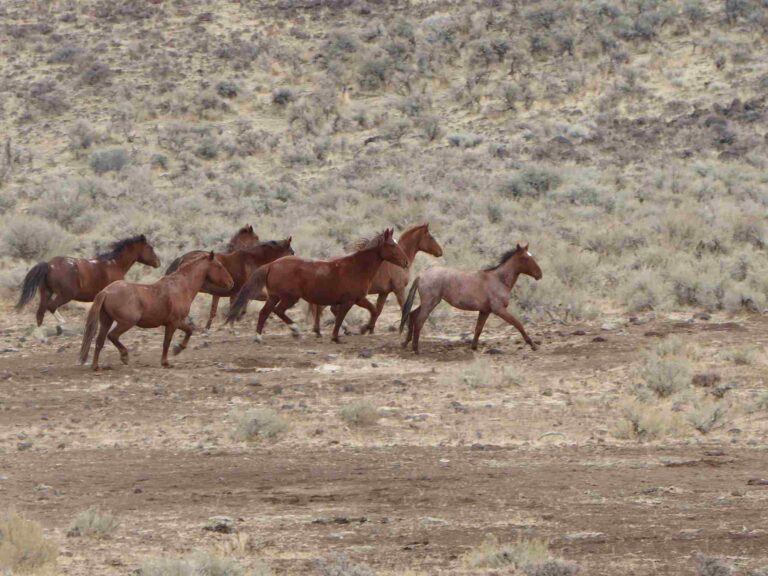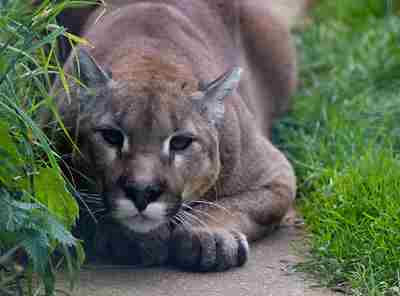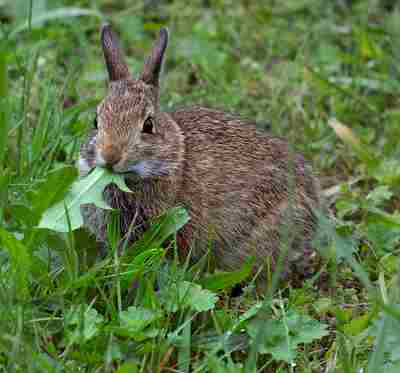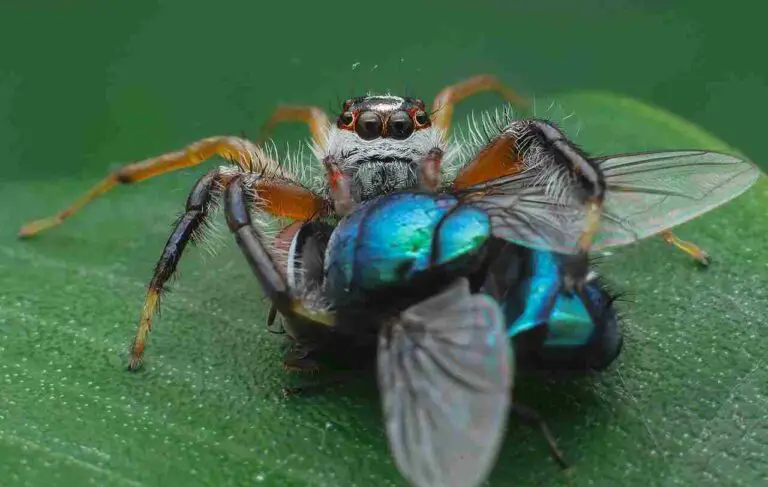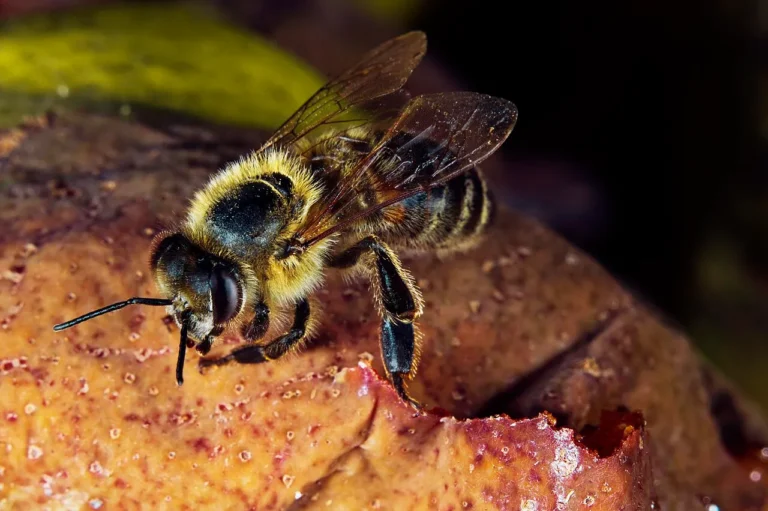Are Ants Consumers? The Consumer Role of Ants Explored
Ants are consumers in the ecosystem because they do not produce their own for, but survive by feeding on biomass from other organisms.
This article discusses the consumer status and role of ants.
Are Ants Producers?
Ants are not producers, but rather may be referred to as heterotrophs or consumers due to their dependence on food sources acquired from other organisms, rather than on any form of autonomous synthesis, as is the case with producers.
Reasons Why Ants are Not Producers
1. They Cannot Synthesize Organic Molecules
One of the primary reasons why ants are not considered producers is their inability to synthesize organic molecules. Unlike plants and certain bacteria, ants lack the necessary biochemical pathways to produce their own food through photosynthesis or chemosynthesis. Instead, they rely on external sources for their nutritional needs.
Ants are heterotrophs, which means they obtain their energy and nutrients by consuming organic matter from other organisms. They are unable to convert inorganic substances, such as carbon dioxide and water, into complex organic molecules like glucose. This fundamental difference in metabolic capabilities sets ants apart from producers in the ecosystem.
To meet their nutritional requirements, ants have evolved a diverse diet that includes a wide range of food sources. Some ants primarily feed on plant matter, such as nectar, pollen, and seeds, while others consume animal-derived substances like dead insects, carrion, or even the secretions of other insects. This dietary flexibility allows ants to adapt to various ecological niches and exploit available resources efficiently.
The absence of the ability to synthesize organic molecules also means that ants are dependent on the primary producers in their environment. Plants, algae, and certain bacteria play a crucial role in converting sunlight or chemical energy into organic compounds through photosynthesis or chemosynthesis. These producers form the foundation of the food chain, providing the energy and nutrients that sustain all other organisms, including ants.
By consuming plant matter or feeding on other organisms that have consumed plants, ants indirectly obtain the organic molecules they need for growth, reproduction, and energy production. They break down complex organic compounds into simpler forms through digestion and absorption, utilizing the nutrients to support their metabolic processes.
2. Ants Rely On Heterotrophic Mode of Nutrition
Ants rely on a heterotrophic mode of nutrition, which is another reason why they are not considered producers in the ecosystem. Heterotrophs are organisms that obtain their energy and nutrients by consuming organic matter from other organisms. Unlike autotrophs, such as plants, which can produce their own food through photosynthesis, ants are unable to synthesize organic molecules.
Ants have evolved a diverse diet that includes a wide range of food sources. Some ants primarily feed on plant matter, such as nectar, pollen, and seeds. They play an important role in pollination and seed dispersal, contributing to the reproductive success of many plant species. However, their consumption of plant matter does not make them producers, as they are not directly involved in the synthesis of organic molecules.
Other ants consume animal-derived substances like dead insects, carrion, or even the secretions of other insects. These ants are known as scavengers or predators, depending on their feeding habits. By feeding on animal matter, they obtain the necessary nutrients for their survival and reproduction. However, their reliance on external sources for food further emphasizes their role as consumers rather than producers.
The heterotrophic mode of nutrition in ants is evident in their digestive system. Ants have specialized structures, such as mandibles and a complex digestive tract, that allow them to break down complex organic compounds into simpler forms. They secrete enzymes that aid in the digestion and absorption of nutrients from their food. This process enables them to extract the energy and essential nutrients they need for growth, reproduction, and energy production.
Ants are also dependent on primary producers in their environment. Plants, algae, and certain bacteria convert sunlight or chemical energy into organic compounds through photosynthesis or chemosynthesis. These producers form the foundation of the food chain, providing the energy and nutrients that sustain all other organisms, including ants. By consuming plant matter or feeding on other organisms that have consumed plants, ants indirectly obtain the organic molecules they need.
3. Producers May Serve as Food for Ants
One of the reasons why ants are not considered producers in the ecosystem is because they rely on other organisms, including producers, as a source of food. While ants play a crucial role in the ecosystem by contributing to pollination and seed dispersal, they do not directly participate in the synthesis of organic molecules.
Ants have a diverse diet that includes plant matter, such as nectar, pollen, and seeds. They are attracted to the sweet nectar produced by flowers, which serves as a source of energy for them. By visiting flowers and feeding on their nectar, ants inadvertently aid in the pollination process by transferring pollen from one flower to another. This interaction between ants and plants is mutually beneficial, as the plants receive pollination services while the ants obtain a source of food.
In addition to nectar, ants also consume other plant-derived materials, such as pollen and seeds. Some ant species have specialized adaptations that allow them to harvest and store seeds, contributing to seed dispersal and the regeneration of plant populations. By consuming these plant materials, ants indirectly obtain the energy and nutrients they need for survival and reproduction.
However, it is important to note that ants are not the primary producers of these plant materials. They rely on the energy and nutrients that are already present in the plant matter. Plants, through the process of photosynthesis, convert sunlight into chemical energy and synthesize organic molecules. These primary producers form the foundation of the food chain, providing the energy and nutrients that sustain all other organisms, including ants.
Ants also consume other organisms that have consumed plant matter. For example, some ants are known to feed on the honeydew secreted by aphids, which are small insects that feed on plant sap. The aphids obtain their energy and nutrients from the plant sap, making them secondary consumers. By feeding on the honeydew produced by aphids, ants indirectly obtain the energy and nutrients derived from the plants.
In this way, ants contribute to the nutrient cycling in the ecosystem. They consume plant matter and other organisms that have consumed plants, breaking down complex organic compounds into simpler forms through their digestive system. This process releases nutrients back into the environment, making them available for other organisms to utilize.
Are Ants Primary Consumers?
Some ant species, like those under the genus Pseudomyrmex, can be classified as primary consumers because their diet is dominated by plant-derived materials. These ants primarily feed on nectar, pollen, and seeds, which are all products of plants. By consuming these plant materials, they obtain the energy and nutrients necessary for their survival and reproduction.
However, it is important to note that not all ant species can be considered primary consumers. Ants are a highly diverse group of arthropods, and their diets can vary greatly depending on the species and their ecological niche. Some ants are carnivorous, preying on other insects or small animals. Others are detritivores, feeding on decaying organic matter.
In general, ants can be described as omnivorous, meaning they have a flexible diet that includes both plant and animal matter. This adaptability allows them to occupy various consumer levels within the ecosystem, including both primary and secondary consumers.
Overall, the classification of ants as primary consumers depends on the specific species and their dietary preferences. While some ants primarily consume plant-derived materials, others may have a more varied diet that includes both plant and animal matter. This diversity in diet is one of the reasons why ants are such successful and adaptable organisms in the natural world.
Reasons Why Ants May be Called Primary Consumers
1. High Concentration of Plant Matter in Their Diet
Ants can be classified as primary consumers due to the high concentration of plant matter in their diet. This is one of the key reasons why ants play a crucial role in the ecosystem as consumers.
Ants are known to feed on a variety of plant materials, including leaves, fruits, seeds, and nectar. They actively forage for these food sources, collecting and transporting them back to their colonies. The consumption of plant matter provides ants with essential nutrients and energy for their survival and reproduction.
The high concentration of plant matter in their diet is significant because it indicates that ants rely heavily on consuming organic material derived directly from plants. This distinguishes them from other organisms that may consume a more diverse range of food sources.
By consuming plant matter, ants contribute to the breakdown and recycling of organic material in the ecosystem. They play a vital role in nutrient cycling, as they consume plant material and excrete waste that enriches the soil. This process helps to maintain the health and fertility of the ecosystem.
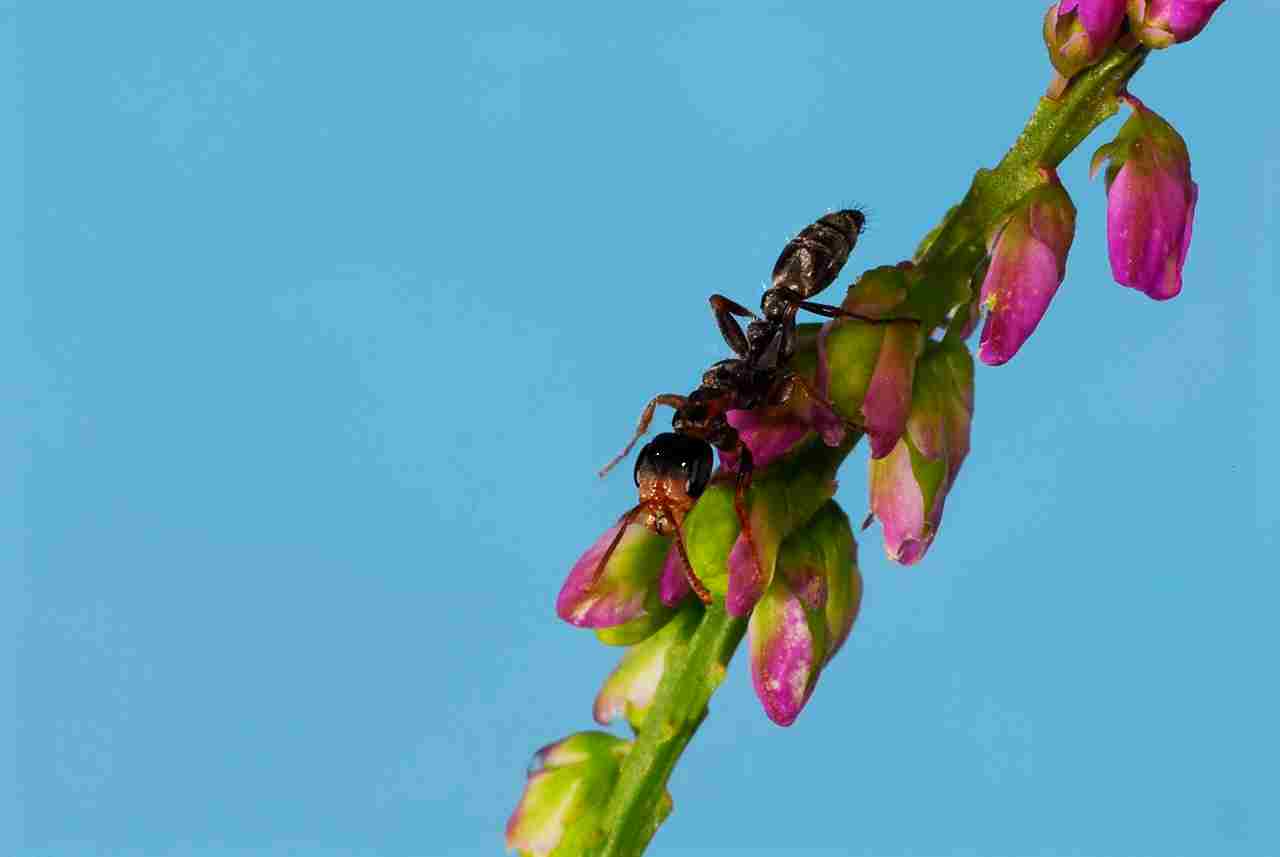
2. Relative Size and Biological Complexity
Another reason why some ants can be classified as primary consumers is their relative size and biological complexity.
Ants come in a wide range of sizes, from tiny species measuring just a few millimeters in length to larger species that can reach several centimeters. Despite their small size, ants exhibit a remarkable level of biological complexity. They have specialized body structures and behaviors that allow them to efficiently consume and process plant matter.
The relative size of ants plays a role in their classification as primary consumers. As small organisms, ants have limited capacity to consume larger prey or engage in predatory behaviors. Instead, they primarily rely on consuming plant matter, which is more readily available and accessible to their size. This preference for plant material further supports their classification as primary consumers.
In addition to their size, the biological complexity of ants contributes to their role as primary consumers. Ants have evolved intricate mouthparts that are adapted for feeding on plant matter. These mouthparts allow them to chew, grind, or suck plant fluids, depending on the species and the type of food source. This specialized adaptation enables ants to efficiently extract nutrients from plant material and utilize it for their growth and development.
Furthermore, ants have complex digestive systems that are capable of breaking down and assimilating the nutrients present in plant matter. They possess specialized enzymes and gut bacteria that aid in the digestion and absorption of complex carbohydrates, proteins, and other organic compounds found in plants. This biological complexity allows ants to effectively extract the necessary nutrients from plant material, making them well-suited for a primary consumer role.
3. Scale of Trophic Impact
When considering the role of ants as primary consumers, it is important to examine the scale of their trophic impact. Ants, despite their small size, can have a significant influence on the ecosystem in which they reside. This scale of trophic impact is one of the reasons why some ants can be classified as primary consumers.
Ants are highly social insects that live in colonies, which can range in size from a few dozen individuals to millions. Within these colonies, ants work together to forage for food and bring it back to the nest. This collective effort allows ants to consume large quantities of plant matter, exerting a substantial trophic impact on the surrounding environment.
The foraging behavior of ants involves the exploration of their habitat in search of food sources. They leave scent trails behind them, allowing other ants from the colony to follow and locate the food. This efficient foraging strategy enables ants to exploit available resources and consume plant matter in large quantities.
Furthermore, ants have been observed to engage in mutualistic relationships with certain plant species. Some ants form symbiotic associations with plants, such as acacias, where they protect the plants from herbivores in exchange for food and shelter. This mutualistic interaction enhances the trophic impact of ants as primary consumers, as they actively defend and consume plant matter within their specialized partnerships.
The scale of trophic impact that ants have on their environment extends beyond their direct consumption of plant matter. Ants play a crucial role in seed dispersal, as they collect seeds and carry them back to their nests. In doing so, they contribute to the dispersal and germination of plants, which ultimately affects the composition and diversity of plant communities.
Moreover, ants are known to cultivate fungus gardens within their nests. They collect organic material, such as leaf litter, and use it as a substrate for cultivating fungi. The ants then consume the fungi, which provides them with additional nutrients. This fungal cultivation by ants further amplifies their trophic impact, as they not only consume plant matter but also actively participate in its decomposition and recycling.
Are Ants Decomposers or Consumers?
Ants, as a group, play a dual role in ecosystems, functioning both as decomposers and consumers. This versatility is attributed to their high diversity of behavioral and dietary tendencies and adaptations. Let’s explore the role of ants as decomposers and consumers in more detail.
Firstly, ants can act as decomposers in various ways. Many ant species exhibit scavenging behavior, feeding on the remains of plants, mammals, mollusks, annelids, and other arthropods. They play a crucial role in the process of biodegradation and nutrient recycling by breaking down organic matter and returning essential nutrients to the soil. By consuming detrital organic substrate, ants help conserve soil and contribute to its fertility. This decomposition process facilitated by ants is vital for maintaining a healthy ecosystem.
In addition to their role as decomposers, ants are also active consumers within their respective habitats. Ants rely on a diverse range of food sources, including plant matter, other insects, nectar, and even honeydew produced by aphids. Their diet can vary depending on the species and the availability of resources in their environment. Some ants are specialized herbivores, while others are omnivorous, consuming both plant and animal matter.
One of the key reasons why ants can be considered consumers is their high concentration of plant matter in their diet. Many ant species feed primarily on plant material, such as seeds, fruits, and leaves. They play a significant role in seed dispersal, collecting seeds and carrying them back to their nests. This behavior contributes to the dispersal and germination of plants, influencing the composition and diversity of plant communities.
Another factor that supports the classification of ants as consumers is their relative size and biological complexity. Despite their small size, ants possess complex social structures and exhibit sophisticated foraging behaviors. They work together in colonies, with different castes performing specific tasks to ensure the survival and growth of the colony. This collective effort allows ants to consume large quantities of food, exerting a substantial trophic impact on their environment.
Furthermore, ants engage in mutualistic relationships with certain plant species, further solidifying their role as consumers. Some ants form symbiotic associations with plants, such as acacias, where they protect the plants from herbivores in exchange for food and shelter. This mutualistic interaction enhances the trophic impact of ants as consumers, as they actively defend and consume plant matter within their specialized partnerships.
*Ants as Decomposers
Many ant species act as scavengers and detritivorous decomposers, exhibiting these behaviors consistently or as part of a broad range of survival strategies. They play a crucial role in the decomposition process by feeding on the remains of plants, mammals, mollusks, annelids, and other arthropods. This scavenging behavior helps break down organic matter and facilitates the biodegradation and recycling of nutrients.
Ants not only consume the remains of other organisms but also feed on detrital organic substrate, contributing to the conservation of soil. By consuming decaying organic matter, ants help to maintain the fertility of the soil. This process is essential for the health and productivity of ecosystems, as it returns vital nutrients back to the soil, making them available for other organisms.
The facility of ants in the process of biodegradation and nutrient recycling is remarkable. Their foraging behavior and ability to break down organic matter contribute to the overall health and balance of ecosystems. As decomposers, ants play a vital role in maintaining the nutrient cycle, ensuring that essential elements are available for the growth and development of other organisms.
In addition to their role in nutrient recycling, ants also contribute to the decomposition of organic matter through their nest-building activities. Ant nests are often constructed using a combination of organic materials, such as plant debris and soil. As ants excavate and rearrange these materials, they further aid in the breakdown of organic matter, accelerating the decomposition process.
The scavenging and detritivorous behaviors of ants are not limited to a specific group or species. Many ant species exhibit these behaviors, showcasing the versatility and adaptability of ants as decomposers. Their ability to consume a wide range of organic materials allows them to thrive in various ecosystems and contribute to the overall functioning and balance of these systems.
Furthermore, the decomposition process facilitated by ants has far-reaching effects on the ecosystem. By breaking down organic matter, ants help to release nutrients that can be utilized by other organisms, including plants. This nutrient cycling is essential for the growth and development of plants, influencing the composition and diversity of plant communities.
*Ants as Consumers
In addition to their role as decomposers, ants also play a significant role as consumers in various ecosystems. While they are most commonly omnivorous and predatory, some ant species may also be herbivorous, depending on their specific dietary preferences and adaptations. As consumers, ants acquire energy and nutrients by feeding on plant matter or animal prey and carcasses.
Ants are known for their diverse foraging behaviors, which allow them to exploit a wide range of food sources. Many ant species have a generalist diet, meaning they consume both plant and animal matter. This adaptability enables them to thrive in different environments and contribute to the energy flow across trophic levels.
When it comes to plant matter, ants may feed on various components, including nectar, fruits, seeds, and even leaves. Some ant species have developed mutualistic relationships with plants, where they obtain food rewards in exchange for protecting the plants from herbivores or assisting in seed dispersal. This interaction highlights the important role ants play in plant reproduction and ecosystem functioning.
In addition to consuming plant matter, ants are also skilled predators. They have a wide range of hunting strategies, including individual predation, group hunting, and raiding. Ants may prey on other insects, spiders, small vertebrates, and even other ants. Their predatory behavior helps to control populations of potential pests and contributes to the overall balance of ecosystems.
Ants’ ability to consume animal prey and carcasses is particularly important in nutrient cycling. When an animal dies, ants are often among the first organisms to discover and feed on the carcass. By consuming the remains, ants help to break down the organic matter and accelerate the decomposition process. This not only aids in the recycling of nutrients but also prevents the spread of diseases that may be associated with decaying animal matter.
Furthermore, ants’ role as consumers extends beyond their direct feeding activities. Ants are known for their social behavior and complex colony structures. Within a colony, different individuals may have specialized roles, including foragers, nurses, and soldiers. This division of labor allows ants to efficiently exploit resources and maximize their collective fitness.
The foraging activities of ants contribute to the overall energy flow within an ecosystem. As ants search for food, they interact with various organisms and transfer energy from one trophic level to another. For example, when ants consume plant matter, they convert the energy stored in the plants into their own biomass. This energy can then be transferred to higher trophic levels when ants become prey for larger predators.
FAQs
1. Are Ants Heterotrophs?
Yes, ants are heterotrophs. As discussed earlier, ants are not autotrophs, which means they cannot produce their own food through photosynthesis or other means. Instead, they rely on external sources for their nutrition.
Ants are part of a diverse group of insects known as hymenopterans, which also includes bees and wasps. Like other members of this group, ants obtain their energy and nutrients by consuming organic matter from their environment.
Ants have a varied diet, depending on their species and role within the colony. They are opportunistic feeders and can consume a wide range of food sources. Some ants primarily feed on plant matter, such as nectar, pollen, and sap. Others are carnivorous and hunt and consume other insects or small animals. Some ants are even known to scavenge on carcasses or feed on organic waste.
In addition to their direct consumption of food, ants also play a role in the decomposition process. They contribute to the breakdown of organic matter, such as dead plant material and animal remains, by feeding on and breaking down these substances. This makes them important contributors to nutrient cycling in ecosystems.
2. What Do Ants Eat?
Ants have a diverse diet, consuming various biogenic materials from their environment. Their food sources include plant matter, animal prey, carcasses, organic waste, plant remains, and detritus.
As discussed earlier, ants are opportunistic feeders, meaning they can consume a wide range of food sources depending on their species and role within the colony. Some ants are herbivores, primarily feeding on plant matter such as nectar, pollen, and sap. They play a crucial role in pollination as they transfer pollen from one flower to another while foraging for food.
However, most ants are omnivores, meaning they have a mixed diet that includes both plant and animal matter. They are known to hunt and consume other insects or small animals, such as termites, caterpillars, and even spiders. This predatory behavior helps control populations of potential pests and contributes to the overall balance of ecosystems.
In addition to their direct consumption of food, ants also contribute to the decomposition process. They feed on and break down organic matter, such as dead plant material and animal remains, aiding in the breakdown and recycling of nutrients. This makes them important contributors to nutrient cycling in ecosystems.
3. Are Ants Herbivores?
Some species of ants like acacia ants, can be classified as herbivores because they feed mainly on plant matter such as nectar, pollen, and sap. However, most ants are omnivores, meaning they have a mixed diet that includes both plant and animal matter.
4. Is an Ant a Detritivore?
Yes, an ant can often act as a detritivore and scavenger, consuming organic particulates and detrital matter in the soil.
Throughout the previous sections, we have explored the diverse diet of ants, including their herbivorous and omnivorous tendencies. However, it is important to note that ants also play a crucial role in the decomposition process as detritivores.
Detritivores are organisms that feed on dead organic matter, such as decaying leaves, dead insects, and other organic debris. Ants contribute to the decomposition process by breaking down these organic materials into smaller particles, which aids in nutrient recycling and soil enrichment.
In their role as detritivores, ants help to accelerate the decomposition process by consuming and breaking down organic particulates. They play a vital role in the ecosystem by recycling nutrients and returning them to the soil, making them available for other organisms to utilize.
Ants are particularly efficient detritivores due to their social structure and foraging behavior. They work together in large colonies, with different castes performing specific tasks. Some ants are responsible for collecting and transporting organic matter back to the nest, while others are involved in the breakdown and processing of the detritus.
By consuming detrital matter, ants not only contribute to the decomposition process but also indirectly support the growth of plants. As they break down organic material, they release nutrients into the soil, which can be absorbed by plant roots. This nutrient cycling is essential for maintaining a healthy and productive ecosystem.
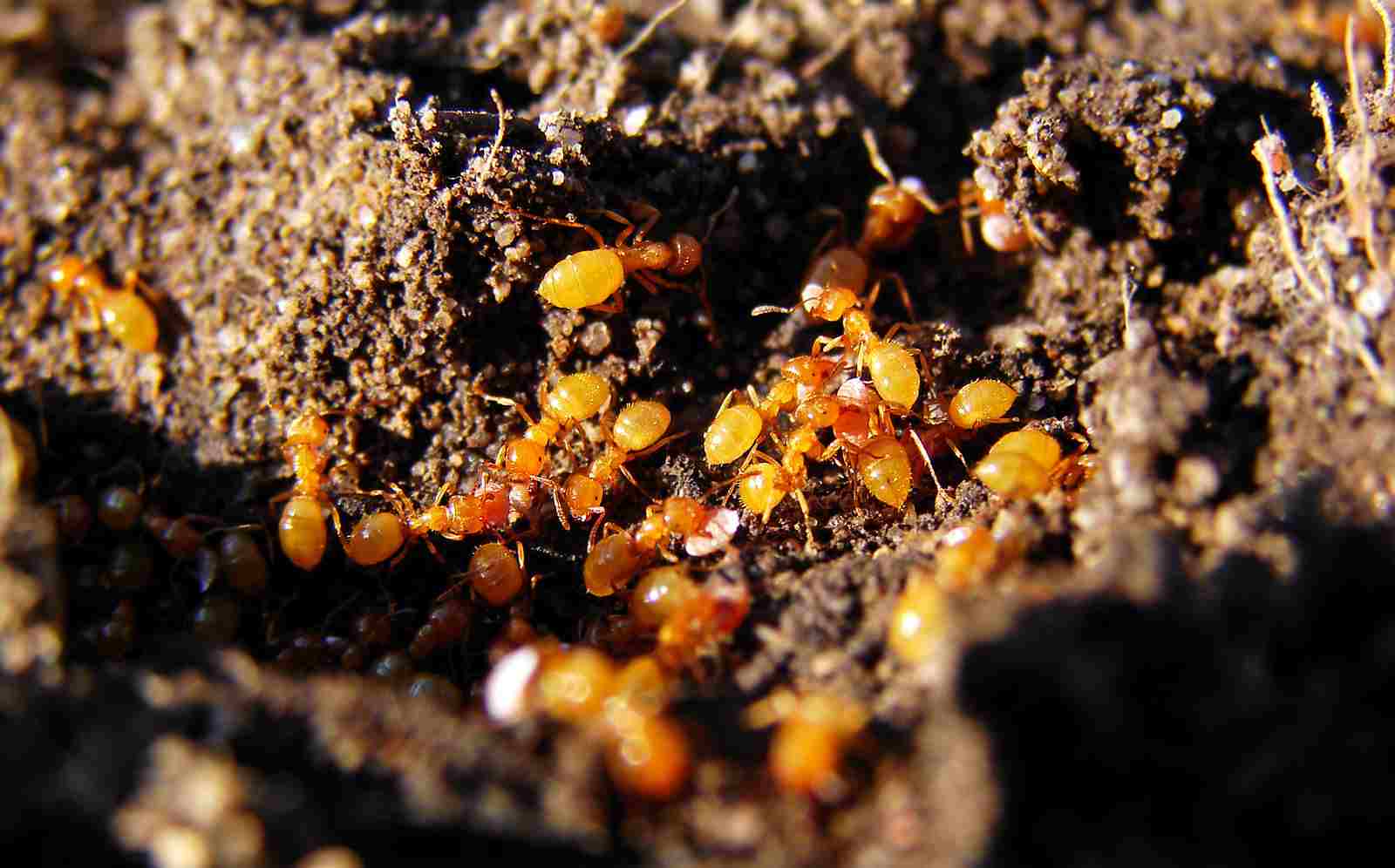
5. Is Ant a Consumer or Decomposer?
Ants can act as both consumers and decomposers in the ecosystem. Throughout the previous sections, we have explored the diverse diet of ants, including their herbivorous and omnivorous tendencies. However, it is important to note that ants also play a crucial role in the decomposition process as detritivores.
As consumers, ants actively seek out and consume various food sources. They are known to feed on a wide range of materials, including nectar, fruits, seeds, insects, and even other small animals. Ants have specialized mouthparts that allow them to extract nutrients from their food, making them efficient consumers in the food chain.
On the other hand, ants also contribute to the decomposition process as decomposers. Detritivores are organisms that feed on dead organic matter, such as decaying leaves, dead insects, and other organic debris. Ants, in their role as detritivores, help break down these organic materials into smaller particles, aiding in nutrient recycling and soil enrichment.
Ants play a vital role in the ecosystem by consuming and breaking down organic particulates. They accelerate the decomposition process, which is essential for nutrient cycling and maintaining a healthy environment. Their social structure and foraging behavior make them particularly efficient detritivores. Different castes within ant colonies perform specific tasks, with some ants responsible for collecting and transporting organic matter back to the nest, while others are involved in the breakdown and processing of the detritus.
6. Is Ant a Producer or Consumer or Decomposer?
When considering the role of ants in the ecosystem, it is clear that they are primarily consumers and decomposers. Throughout the previous sections, we have explored the diverse diet of ants, including their herbivorous and omnivorous tendencies. Ants actively seek out and consume various food sources, such as nectar, fruits, seeds, insects, and even other small animals. Their specialized mouthparts allow them to extract nutrients from their food, making them efficient consumers in the food chain.
However, ants also play a crucial role in the decomposition process as detritivores. As detritivores, ants feed on dead organic matter, such as decaying leaves, dead insects, and other organic debris. They help break down these materials into smaller particles, aiding in nutrient recycling and soil enrichment. This makes ants important contributors to the decomposition process and overall ecosystem health.
While ants are primarily consumers and decomposers, they are not considered producers. Producers, such as plants, are able to convert sunlight into energy through photosynthesis. Ants do not possess this ability and rely on consuming other organisms or organic matter for their energy needs.
7. Are Ants Consumers or Producers?
When considering the role of ants in the ecosystem, it is evident that they primarily function as consumers. Throughout the previous sections, we have explored the diverse diet of ants, including their herbivorous and omnivorous tendencies. Ants actively seek out and consume various food sources, such as nectar, fruits, seeds, insects, and even other small animals. Their specialized mouthparts allow them to extract nutrients from their food, making them efficient consumers in the food chain.
However, ants do not play a significant role as producers in the ecosystem. Producers, such as plants, have the ability to convert sunlight into energy through photosynthesis. Ants, on the other hand, do not possess this capability and rely on consuming other organisms or organic matter for their energy needs.
8. Are ants consumers in the ocean
Ants are not typically found in the ocean, as they are terrestrial creatures. However, they can be active in coastal onshore habitats that are close to the ocean. While ants themselves may not directly influence the ocean ecosystem, their presence in these coastal areas can have indirect effects.
Coastal onshore habitats serve as a transition zone between land and sea, and they are home to a diverse range of organisms. Ants play a role in these habitats by interacting with other organisms and participating in the food chain. They consume various food sources, including insects, fruits, seeds, and even other small animals. By consuming these organisms, ants help to regulate their populations and maintain the balance of the ecosystem.
In addition to their role as consumers, ants also contribute to nutrient cycling in coastal habitats. They scavenge and decompose organic matter, such as dead plants and animals, which helps to break down these materials and release nutrients back into the environment. This process is important for the overall health and productivity of the ecosystem.
While ants may not directly impact the ocean itself, their activities in coastal onshore habitats can indirectly influence the marine ecosystem. For example, ants can transport seeds from land to the coastal areas, aiding in the dispersal of plant species. This can have implications for the vegetation and biodiversity of the coastal zone, which in turn can affect the organisms that rely on these habitats.
9. Are Ants Decomposers?
Ants can indeed be considered as decomposers due to their detritivorous scavenging behavior. As discussed earlier, ants play a crucial role in nutrient cycling in coastal habitats. They scavenge and decompose organic matter, such as dead plants and animals, which helps break down these materials and release nutrients back into the environment. This process is essential for the overall health and productivity of the ecosystem.
In addition to their role as consumers, ants contribute to the decomposition process by breaking down organic matter and aiding in its decay. They play a vital role in the breakdown of dead plant material, contributing to the recycling of nutrients and the release of carbon dioxide back into the atmosphere. This decomposition process is crucial for the overall balance of the ecosystem and the cycling of nutrients.
While ants primarily consume other organisms as a food source, their detritivorous scavenging behavior allows them to contribute to the decomposition process. By consuming and breaking down organic matter, ants help to break down complex compounds into simpler forms that can be utilized by other organisms in the ecosystem.
10. Are Ants Carnivores?
Ants are generally not considered carnivores because they are very versatile and adaptable, making them omnivores. However, it is important to note that some ant species can be significantly predatory and carnivorous.
As discussed earlier, ants have a flexible diet that allows them to consume a wide range of food sources. They are known to feed on various types of organic matter, including plant material, nectar, fruits, and seeds. Additionally, ants are opportunistic feeders and can scavenge on dead insects or small animals when the opportunity arises.
While the majority of ants are not strictly carnivorous, there are exceptions. Certain ant species have evolved to be highly predatory, preying on other insects or even small vertebrates. These carnivorous ants have specialized adaptations, such as strong jaws and venomous stings, to capture and subdue their prey.
11. Are Ants Omnivores?
Ants have a flexible diet that allows them to consume a wide range of food sources, making them omnivores. As discussed earlier, ants are not strictly carnivorous or herbivorous. They have the ability to adapt and thrive in various environments, which is reflected in their dietary preferences.
Ants are known to feed on a variety of organic matter. They consume plant material, such as leaves, flowers, and seeds, which makes them herbivores to some extent. Additionally, ants are attracted to the sweet nectar produced by flowers, making them important pollinators in many ecosystems.
In addition to plant-based food sources, ants are also opportunistic feeders. They scavenge on dead insects or small animals when the opportunity arises, which classifies them as carnivores. This scavenging behavior helps to clean up the environment by removing decaying organic matter.
The ability of ants to consume both plant and animal matter is what makes them omnivores. This flexibility in their diet allows them to adapt to different food availability and environmental conditions. It also contributes to their success as a species, as they can exploit a wide range of resources.
It is important to note that the specific diet of ants can vary depending on the species and their habitat. Some ants may have specialized adaptations to exploit certain food sources, while others may have more generalist feeding habits. This diversity in dietary preferences among ant species contributes to the overall ecological balance and functioning of ecosystems.
12. What Do Fire Ants Eat?
Fire ants, like other ants, have a diverse diet that includes both plant and animal matter. They are opportunistic feeders and can consume a wide range of food sources. Fire ants are known to feed on plant matter, invertebrates including other insects, and even small vertebrates.
In terms of plant matter, fire ants are attracted to sweet substances such as nectar and honeydew. They will feed on the sugary secretions produced by plants, making them important pollinators in their ecosystems. Fire ants also consume plant material such as leaves, flowers, and seeds, although their preference for plant matter may vary depending on the species and their habitat.
When it comes to animal matter, fire ants are carnivorous and will scavenge on dead insects or small animals. They are particularly skilled at capturing and subduing prey, using their powerful jaws and venomous stings. Fire ants are known to attack and consume other insects, including caterpillars, spiders, and even small vertebrates like lizards or birds.
The ability of fire ants to consume both plant and animal matter allows them to adapt to different food availability and environmental conditions. This flexibility in their diet contributes to their success as a species, as they can exploit a wide range of resources.
It is important to note that the specific diet of fire ants can vary depending on the species and their geographic location. Some fire ant species may have specialized adaptations to exploit certain food sources, while others may have more generalist feeding habits. This diversity in dietary preferences among fire ant species contributes to the overall ecological balance and functioning of ecosystems.
13. What are Ants in the Food Chain?
Ants play a crucial role in the food chain as consumers. They occupy a significant position in the chain, occurring above producers and between levels 2 and 3.
As discussed earlier, ants have a diverse diet that includes both plant and animal matter. They are opportunistic feeders and can consume a wide range of food sources. Ants are known to feed on plant matter such as nectar, honeydew, leaves, flowers, and seeds. They are attracted to sweet substances produced by plants and play a vital role in pollination. Additionally, ants are carnivorous and scavenge on dead insects or small animals. They are skilled at capturing and subduing prey, making them efficient predators in their ecosystems.
Ants act as consumers by obtaining energy and nutrients from the food they consume. They play a crucial role in transferring energy from lower trophic levels to higher trophic levels in the food chain. As primary consumers, ants feed on plants and serve as a link between producers and higher-level consumers. They contribute to the overall functioning and balance of ecosystems by regulating populations of both plant and animal species.
14. Are Ants Primary Consumers or Secondary Consumers?
Ants are versatile creatures when it comes to their role in the food chain, and whether they are primary consumers or secondary consumers depends on the species and the availability of food materials.
As discussed earlier, ants have a diverse diet that includes both plant and animal matter. They are opportunistic feeders and can consume a wide range of food sources. Some ant species primarily feed on plant matter such as nectar, honeydew, leaves, flowers, and seeds. These ants act as primary consumers, as they obtain their energy and nutrients directly from plants. They play a crucial role in transferring energy from producers to higher trophic levels in the food chain.
On the other hand, there are ant species that are carnivorous and feed on other insects or small animals. These ants act as secondary consumers, as they obtain their energy and nutrients by consuming other organisms. They are skilled predators, capturing and subduing their prey to obtain the necessary resources for survival.
The classification of ants as primary consumers or secondary consumers is not fixed and can vary depending on the species and the availability of food materials. In some cases, ants may switch between being primary consumers and secondary consumers based on the abundance of plant or animal food sources in their environment.
15. Are Ants Primary Consumers in the Food Chain?
Ants can indeed be considered primary consumers in the food chain, especially when their diet is dominantly or exclusively plant-derived. As discussed earlier, some ant species primarily feed on plant matter such as nectar, honeydew, leaves, flowers, and seeds. These ants act as primary consumers because they obtain their energy and nutrients directly from plants.
In the food chain, primary consumers play a crucial role in transferring energy from producers (plants) to higher trophic levels. Ants that feed on plant materials contribute to this energy flow by consuming and breaking down plant matter, extracting the necessary nutrients for their survival. They are an essential link between plants and other organisms in the ecosystem.
However, it’s important to note that the classification of ants as primary consumers is not fixed and can vary depending on the species and the availability of food materials. Ants are opportunistic feeders and can adapt their diet based on the abundance of plant or animal food sources in their environment.
In some cases, ants may switch between being primary consumers and secondary consumers. For example, if there is a scarcity of plant-derived food, ants may resort to feeding on other insects or small animals, acting as secondary consumers. This flexibility in their feeding behavior allows ants to adapt to changing environmental conditions and ensure their survival.
16. Are Fire Ants Decomposers?
Fire ants can indeed act as decomposers when they consume detritus and scavenge on organic remains. As discussed earlier, ants have a diverse diet and can adapt their feeding behavior based on the availability of food sources in their environment. While fire ants are known for their aggressive nature and carnivorous tendencies, they also play a role in the decomposition process.
When fire ants come across dead animals or decaying plant matter, they will scavenge on these organic remains. By consuming and breaking down these materials, fire ants contribute to the decomposition process. They help to break down complex organic compounds into simpler forms, releasing nutrients back into the ecosystem.
Fire ants, like other ants, have specialized enzymes in their digestive systems that allow them to break down and process organic matter. These enzymes help them extract the necessary nutrients from the decomposing material, which they use for their own growth and survival.
While fire ants primarily feed on other insects and small animals, their ability to scavenge on organic remains makes them important contributors to the decomposition process. They help to recycle nutrients and maintain the balance of the ecosystem.
Conclusion
* In this article, we have explored various aspects of ants’ feeding behavior and their role in the ecosystem.
* We have learned that ants are heterotrophs, meaning they rely on external sources for their nutrition.
* Ants have a diverse diet, ranging from herbivorous to carnivorous, and they can also act as decomposers by scavenging on organic remains.
* Additionally, ants play a crucial role in the food chain as both primary and secondary consumers.
* Fire ants, in particular, contribute to the decomposition process by breaking down complex organic compounds and releasing nutrients back into the ecosystem.
* Overall, ants are important contributors to the balance and functioning of ecosystems.
